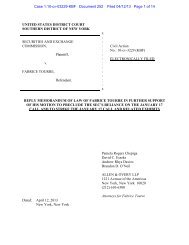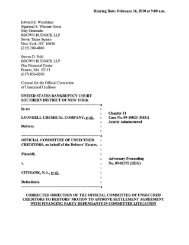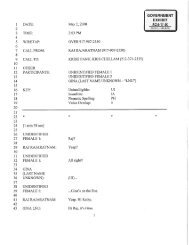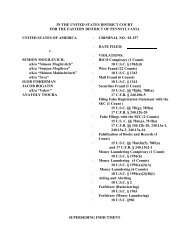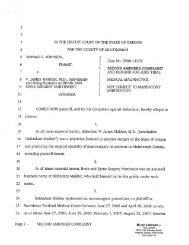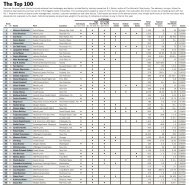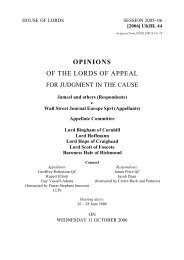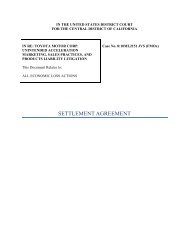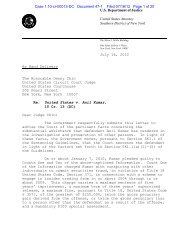Salz Review - Wall Street Journal
Salz Review - Wall Street Journal
Salz Review - Wall Street Journal
You also want an ePaper? Increase the reach of your titles
YUMPU automatically turns print PDFs into web optimized ePapers that Google loves.
131<br />
<strong>Salz</strong> <strong>Review</strong><br />
An Independent <strong>Review</strong> of Barclays’ Business Practices<br />
term incentive plans, which until very recently used only financial measures<br />
of performance.<br />
11.6 Outside Barclays, we observed with interest alternative approaches to pay which<br />
tended not to emphasise financial reward as the primary motivator of employee<br />
behaviour. Some companies emphasise collective achievement through a firm-wide<br />
profit share scheme; others pay bonuses only for exceptional performance. These<br />
pay models serve to reinforce – as well as being products of – their companies’<br />
distinctive cultures. They explicitly value the performance of the team over the<br />
individual, they tend to balance better the long term objectives of the company, and<br />
they amplify the message that higher pay is not the only form of reward. Personal<br />
responsibility and a sense of purpose can produce superior results and a better<br />
alignment to stated values than purely financial incentives. Taken in the round, these<br />
examples capture the approach to rewards that we would favour for Barclays over<br />
the long term (see Appendix B for further discussion).<br />
Exhibit 8. Examples of Other Pay Models<br />
Common wisdom is that companies perform better by offering staff a financial<br />
incentive for their performance. However, not only has a significant body of academic<br />
research cast doubt on that assumption, but many leading companies have succeeded<br />
while being far less reliant on pay as a performance lever. Prominent examples of<br />
alternative models include:<br />
- Employee profit share schemes at UK department store John Lewis and<br />
European banking group Handelsbanken; 202<br />
- Absence of individual incentives for retail staff at Apple, which nonetheless<br />
achieves the highest sales per retail square foot in the world; 203<br />
- Absence of individual incentives for staff at Southwest Airlines, which is<br />
consistently the cost, productivity and customer service leader in its industry; 204<br />
- Elimination of individual sales goals at GlaxoSmithKline in the United States and<br />
replacement by assessment of three factors: sales competency, customer<br />
evaluation, and overall business unit performance. 205<br />
11.7 Because it is difficult to understand fully the subtleties of the behaviours they<br />
generate, it is hard to use incentive schemes alone to drive appropriate behaviours.<br />
Incentives tend to cause employees to focus narrowly on the outcomes directly<br />
rewarded by the scheme (or what employees believe will be rewarded) – as the<br />
alleged mis-selling of PPI demonstrates. So it may be possible to use incentives to<br />
drive sales of retail bank products; but it is far harder to design incentives which<br />
encourage the sellers at the same time to consider whether the product is suitable.<br />
11.8 As a universal bank embracing many different businesses, Barclays’ approach to pay<br />
must reflect the fact that the skills, attributes and market pay rates of staff in<br />
202 See www.johnlewispartnership.co.uk; Jeremy Hope and Steve Player, Beyond Performance Management, 2012.<br />
203 The New York Times, “Apple’s Retail Army, Long on Loyalty but Short on Pay”, 23 June 2012.<br />
204 Hope and Player, Beyond Performance Management.<br />
205 GlaxoSmithKline, “GlaxoSmithKline implements next phase of new incentive compensation program for<br />
US sales representatives”, press release, 5 July 2011.




